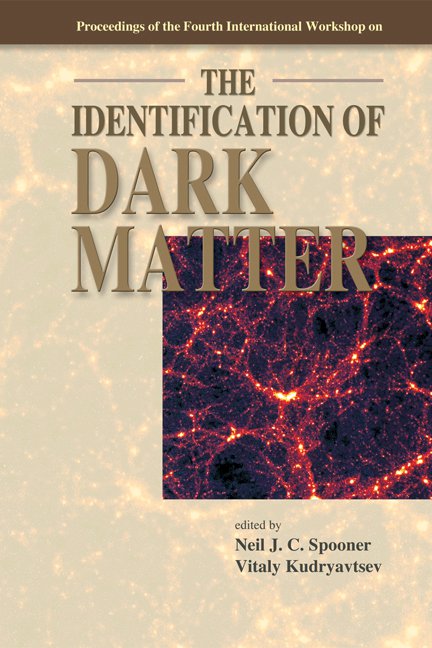THE CERN AXION SOLAR TELESCOPE (CAST): STATUS AND PROSPECTS
- I. G. IRASTORZA,
- S. ANDRIAMONJE,
- E. ARIK,
- D. AUTIERO,
- F. AVIGNONE,
- K. BARTH,
- E. BINGOL,
- H. BRAUNINGER,
- R. BRODZINSKl,
- J. CARMONA,
- E. CHESI,
- S. CEBRIAN,
- S. CETIN,
- J. COLLAR,
- R. CRESWICK,
- T. DAFNI,
- R. DE OLIVEIRA,
- S. DEDOUSSIS,
- A. DELBART,
- L. DI LELLA,
- C. ELEFTHERIADIS,
- G. FANOURAKIS,
- H. FARACH,
- H. FISCHER,
- F. FORMENTI,
- T. GERALIS,
- I. GIOMATARIS,
- S. GNINENKO,
- N. GOLOUBEV,
- R. HARTMANN,
- M. HASINOFF,
- D. HOFFMANN,
- J. JACOBY,
- D. KANG,
- K. KÖNIGSMANN,
- R. KOTTHAUS,
- M. KRCMAR,
- M. KUSTER,
- B. LAKIC,
- A. LIOLIOS,
- A. LJUBICIC,
- G. LUTZ,
- G. LUZON,
- H. MILEY,
- A. MORALES,
- J. MORALES,
- M. MUTTERER,
- A. NIKOLAIDIS,
- A. ORTIZ,
- T. PAPAEVANGELOU,
- A. PLACCI,
- G. RAFFELT,
- H. RIEGE,
- M. SARSA,
- I. SAVVIDIS,
- R. SCHOPPER,
- I. SEMERTZIDIS,
- C. SPANO,
- J. VILLAR,
- B. VULLIERME,
- L. WALCKIERS,
- K. ZACHARIADOU, and
- K. ZIOUTAS
European Organization for Nuclear Research (CERN), Geneve, Switzerland
Attending speaker
DAPNIA, Centre d'Etudes de Saclay (CEA-Saclay), Gif-Sur-Yvette, France
Department of Physics, Bogazici University, Istambul, Turkey
European Organization for Nuclear Research (CERN), Geneve, Switzerland
Department of Physics and Astronomy, U. South Carolina, Columbia, Sc, USA
European Organization for Nuclear Research (CERN), Geneve, Switzerland
Institut für Kernphysik, Technische Universitat Darmstadt, Darmstadt, Germany
Max-Planck-Institut für Extraterrestrische Physik, MPG, Garching, Germany
Pacific Northwest National Laboratory, Richland, Wa, USA
Instituto de Física Nuclear y Altas Energías, Universidad de Zaragoza, Zaragoza, Spain
European Organization for Nuclear Research (CERN), Geneve, Switzerland
Department of Physics and Astronomy, U. of British Columbia, Vancouver, Canada
Instituto de Física Nuclear y Altas Energías, Universidad de Zaragoza, Zaragoza, Spain
Department of Physics, Bogazici University, Istambul, Turkey
Enrico Fermi Institute, University of Chicago, Chicago, Il, USA
Department of Physics and Astronomy, U. South Carolina, Columbia, Sc, USA
Institut für Kernphysik, Technische Universitat Darmstadt, Darmstadt, Germany
European Organization for Nuclear Research (CERN), Geneve, Switzerland
Aristotle University of Thessaloníki, Thessaloniki, Greece
DAPNIA, Centre d'Etudes de Saclay (CEA-Saclay), Gif-Sur-Yvette, France
European Organization for Nuclear Research (CERN), Geneve, Switzerland
Aristotle University of Thessaloníki, Thessaloniki, Greece
National Center for Scientific Research “Demokritos” (NRCPS), Athens, Greece
Department of Physics and Astronomy, U. South Carolina, Columbia, Sc, USA
Albert-Ludwigs-Universität Freiburg, Freiburg, Germany
European Organization for Nuclear Research (CERN), Geneve, Switzerland
National Center for Scientific Research “Demokritos” (NRCPS), Athens, Greece
DAPNIA, Centre d'Etudes de Saclay (CEA-Saclay), Gif-Sur-Yvette, France
Institute for Nuclear Research (INR), Russian Academy of Sciences, Moscow, Russia
Institute for Nuclear Research (INR), Russian Academy of Sciences, Moscow, Russia
Max-Planck-Institut für Extraterrestrische Physik, MPG, Garching, Germany
European Organization for Nuclear Research (CERN), Geneve, Switzerland
Department of Physics and Astronomy, U. of British Columbia, Vancouver, Canada
Institut für Kernphysik, Technische Universitat Darmstadt, Darmstadt, Germany
Institut für Kernphysik, Technische Universitat Darmstadt, Darmstadt, Germany
Albert-Ludwigs-Universität Freiburg, Freiburg, Germany
Albert-Ludwigs-Universität Freiburg, Freiburg, Germany
Max-Planck-Institut für Physik, Munich, Germany
Ruder Boskovic Institute, Zagreb, Croatia
Max-Planck-Institut für Extraterrestrische Physik, MPG, Garching, Germany
Ruder Boskovic Institute, Zagreb, Croatia
Aristotle University of Thessaloníki, Thessaloniki, Greece
Ruder Boskovic Institute, Zagreb, Croatia
Max-Planck-Institut für Physik, Munich, Germany
Instituto de Física Nuclear y Altas Energías, Universidad de Zaragoza, Zaragoza, Spain
Pacific Northwest National Laboratory, Richland, Wa, USA
Instituto de Física Nuclear y Altas Energías, Universidad de Zaragoza, Zaragoza, Spain
Instituto de Física Nuclear y Altas Energías, Universidad de Zaragoza, Zaragoza, Spain
Institut für Kernphysik, Technische Universitat Darmstadt, Darmstadt, Germany
Aristotle University of Thessaloníki, Thessaloniki, Greece
Instituto de Física Nuclear y Altas Energías, Universidad de Zaragoza, Zaragoza, Spain
Aristotle University of Thessaloníki, Thessaloniki, Greece
European Organization for Nuclear Research (CERN), Geneve, Switzerland
Max-Planck-Institut für Physik, Munich, Germany
European Organization for Nuclear Research (CERN), Geneve, Switzerland
Instituto de Física Nuclear y Altas Energías, Universidad de Zaragoza, Zaragoza, Spain
Aristotle University of Thessaloníki, Thessaloniki, Greece
Institut für Kernphysik, Technische Universitat Darmstadt, Darmstadt, Germany
Institut für Kernphysik, Technische Universitat Darmstadt, Darmstadt, Germany
Albert-Ludwigs-Universität Freiburg, Freiburg, Germany
Instituto de Física Nuclear y Altas Energías, Universidad de Zaragoza, Zaragoza, Spain
European Organization for Nuclear Research (CERN), Geneve, Switzerland
European Organization for Nuclear Research (CERN), Geneve, Switzerland
National Center for Scientific Research “Demokritos” (NRCPS), Athens, Greece
European Organization for Nuclear Research (CERN), Geneve, Switzerland
Aristotle University of Thessaloníki, Thessaloniki, Greece
The CAST experiment is being mounted at CERN. It will make use of a decommissioned LHC test magnet to look for solar axions through its conversion into photons inside the magnetic field. The magnet has a field of 9 Tesla and length of 10 m and is installed in a platform which allows to move it ±8° vertically and ±40° horizontally. According to these numbers we expect a sensitivity in axion-photon coupling gaγγ ≲ 5 × 10−11 GeV−1 for ma ≲ 10−2 eV, and with a gas filled tube gaγγ ≲ 10−10 GeV−1 for ma ≲ 2 eV.


